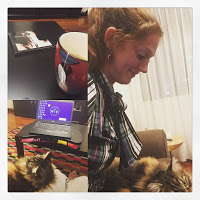Q&A: The “Lean and Mean” Class Prep Method
I recently received this e-mail from a reader:
Hi there,
In your “mean and lean” approach to class preparation you state: 45 minutes to construct the argument around the ‘what if’ question. Would you mind elaborating on this? I’d be interested to know how to go about doing this for myself.
Many thanks,
X
The e-mail referred to this post, which I wrote way back when I first started teaching a 3-3 courseload. Things have changed since then, so you might be interested in my answer to this question, and how I look at this now:
Dear X,
Thank you for reaching out to me through my blog, and for sending me your question.
I originally took the “mean and lean” procedure from this blog from Stanford , which mostly refers to prepare for class in small chunks of time to prepare a lecture. The What If question came from this part:
A day or two later, return to your preparation and reread your outline. Determine if you have captured the main points. Briefly jot down explanations and examples that explain the key items. Try a “just-in-time” approach, where you introduce an example problem to the class, and then provide the information needed to solve the problem. Use a single example with many “what-ifs” instead of several unconnected examples. Stop working on the lecture after half an hour to 45 minutes.
I´ve interpreted this as an opening for discussion in an example to focus on “what if I change this parameter”, “what if this force was not acting”, “what if I would have more rebar here”, etc…
Now, I must say that I originally really liked the idea of the “lean and mean” approach, but it turned out to be impossible for me to follow it. With 3 new courses to develop in my first semester, and other new courses in consecutive semester, I just needed to use every block of time possible just to prepare notes of my material. Only in my 3rd semester did I get the chance for example to make decent slides for my Pavements class – before I had a hastily compiled set of slides (scans of the main photographs and charts from the book) and my hand-written notes… It took some fighting with my own perfectionism to realize it would be impossible to prepare every class from the very first semester with the love and care that I would want it to give.
Best of luck with teaching!
Eva

